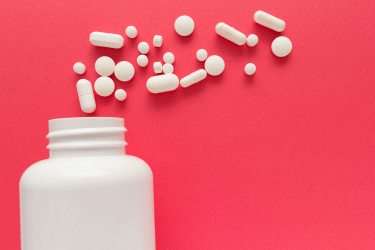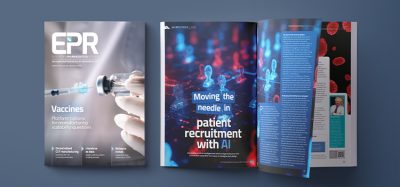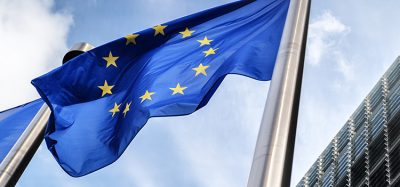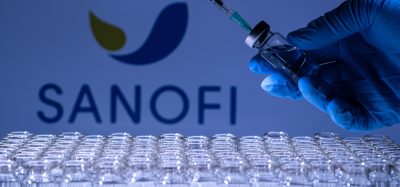Five patent issues that European biosimilar developers should consider before entering the US market
Posted: 26 June 2020 | Grace Truong (Goodwin Procter LLP), Joshua Whitehill (Goodwin Procter LLP), Natasha Daughtrey (Goodwin Procter LLP) | No comments yet
As patents on originator biologic medicines begin to expire, there are growing opportunities for biosimilars to enter the market at lower prices. Joshua Whitehill, Natasha Daughtrey and Grace Truong discuss key aspects of US patent law that European developers should consider before entering the American market.


BIOPHARMACEUTICAL companies around the globe, including many in Europe, are developing biosimilars to sell on the US market. The US Food and Drug Administration (FDA) defines a biosimilar as “a biological product that is approved based on a showing that it is highly similar to an FDA-approved biological product, known as a reference product, and has no clinically meaningful differences in terms of safety and effectiveness from the reference product.” Generic small molecule drugs, in contrast, must be “bioequivalent” to the branded reference drug.
A signature piece of the US biosimilar system is the Biologics Price Competition and Innovation Act (BPCIA).1 The BPCIA established an abbreviated regulatory pathway for biosimilar approvals and a unique litigation framework for resolving patent disputes between the biologic drug innovator (ie, reference product sponsor or RPS) and biosimilar applicant.2
The BPCIA is a complex law that can be difficult to navigate,3 particularly without significant prior US patent litigation or regulatory experience. Like the previously established Hatch-Waxman Act for generic drugs, the BPCIA makes submitting an abbreviated regulatory application for a biosimilar to the FDA an “artificial” act of infringement.4 The infringing act is artificial in the sense that no act of direct infringement (eg, a US sale) has yet occurred and serves to establish jurisdiction for federal courts to resolve patent disputes before biosimilar products are marketed.5
Following the FDA’s acceptance of a biosimilar application, the BPCIA calls for a series of pre-litigation disclosures and negotiations between parties – frequently called the “patent dance”. These activities, if completed,6 determine which patents the parties will litigate immediately and which could experience a potential second litigation closer to the time of launch.7
Typically, the applicant’s most time-consuming and expensive patent dance step involves preparing a detailed statement of its patent infringement defences. Given the large number of patents often disclosed by the RPS during the dance8 and the potential for statements to be used adversely in later legal proceedings, applicants should engage sophisticated US counsel to assess the patent landscape and develop thorough defence strategies, well ahead of FDA-submission.9
Although making a product outside the country cannot in-and-of-itself be an infringing act under US law, subsequently bringing that product into the US can constitute infringement”
In this article, we highlight five relatively unique aspects of US patent law that often arise in BPCIA litigation: (1) the “doctrine of equivalents” infringement theory; (2) infringement of manufacturing process patents under 35 U.S.C. § 271(g); (3) the § 271(e)(1) safe harbour from infringement; (4) non-infringement via label carve-out; and (5) preliminary injunctions. These issues have arisen for decades in the context of generic drug litigation but are comparatively less developed in the context of more recent biosimilar litigation, where these issues are even more prone to arise. Thus, European biosimilar developers should consider these important principles when preparing their litigation strategies.
1. Doctrine of equivalents
To prove patent infringement, a patentee must show either that the defendant’s product practices every patent claim element – called “literal infringement” – or that the product is equivalent to the claimed invention. This latter infringement theory, known as the doctrine of equivalents, can be proven by showing that the accused product contains a feature interchangeable with or insubstantially different from the claim element that is not literally present in the product.10
The doctrine of equivalents has featured prominently in biosimilar litigation. For example, in Amgen v. Sandoz, Amgen alleged that Sandoz’s manufacturing process for its filgrastim and pegfilgrastim biosimilars infringed the former’s patent under the doctrine of equivalents. The court, however, found no equivalency because Amgen’s patented process required discrete, sequential “washing” and “eluting” steps, whereas the accused process had only a single step that functioned differently.11 In Amgen v. Coherus, concerning Coherus’s pegfilgrastim biosimilar, the court dismissed Amgen’s equivalency case due to prosecution history estoppel,12 which prevents patentees from using the doctrine of equivalents to recapture subject matter that they “clearly and unmistakably” surrendered during patent prosecution.13,14
The doctrine of equivalents was also deemed unavailable in Janssen v. Celltrion, which concerned the cell media used to make Celltrion’s infliximab biosimilar. There, the court found the accused media would have been obvious in view of the prior art and, therefore, Janssen’s asserted scope of equivalency would have improperly “ensnared” the prior art.15
Notwithstanding the failure of the doctrine of equivalents in these cases, this infringement theory is alive and well and has succeeded in numerous other drug patent cases. Accordingly, biosimilar applicants should consider how the RPS might invoke this doctrine to expand the patents at issue in BPCIA litigation.16
2. Process patents
Patent infringement in the US typically requires infringing acts to occur within the US; an accused product must be manufactured, used, sold, offered for sale or imported in or to the US during the patent’s term. A crucial exception applies to manufacturing process patents, which have played a disproportionately large role in BPCIA litigation.17 35 U.S.C. § 271(g) creates infringement liability where a product is made abroad using a process patented in the US and is then imported into, sold, offered for sale or used in the US. Thus, although making a product outside the country cannot in-and-of-itself be an infringing act under US law, subsequently bringing that product into the US can constitute infringement.
Although there are notable exceptions to § 271(g),18 and not all process patents fall within the purview of the statute,19 any biosimilar developer that manufactures its products outside the US but plans to enter the country’s markets should consider potential liability under § 271(g).
3. § 271(e)(1) safe harbour
Developing a biosimilar product for FDA approval inevitably involves actions that could read on an RPS’s patents. To promote R&D and facilitate approval of cheaper alternative drugs, the US created a safe harbour defence under 35 U.S.C. § 271(e)(1) that shields otherwise-infringing activities for uses reasonably related to the development and submission of information to the FDA in connection with regulatory approval.20


Courts have also considered the safe harbour in the BPCIA context. Most notably, in Amgen v. Hospira, a jury found that 14 of 21 accused batches of erythropoietin drug substance that Hospira manufactured years before FDA approval were not protected by the safe harbour and therefore infringed Amgen’s manufacturing process patent. As a reasonable royalty for such infringement, the jury awarded Amgen $70 million in damages, plus interest.24 Accordingly, biosimilar developers should be cognisant of the safe harbour’s scope and potential limitations.
4. Label carve-outs
A commonly implemented strategy for avoiding infringement of US treatment method patents is to carve out certain indications from a generic or biosimilar product label that potentially read on the patents’ claims. Removing such language might avoid infringement liability for patents covering the carved-out indication, because the applicant’s label will not instruct patients or providers to use the product in an infringing manner.25 When biologic reference products have multiple indications that are covered by different patents, biosimilar applicants should consider the possibility of a carve-out.26 However, other communications and marketing practices must also be considered, as the RPS is likely to make arguments beyond the label itself.
5. Preliminary injunctions
At least 180 days before commercially launching a biosimilar in the US, the BPCIA requires an applicant to notify the RPS of such plans. Under the BPCIA, the sponsor may respond by seeking a preliminary injunction to prevent biosimilar sales during the litigation.27 Preliminary injunctions are a type of extraordinary relief that federal courts can grant to maintain the status quo during litigation, for example, by blocking sales of an accused product.
Although preliminary injunctions can be sought in other types of patent litigation, they were explicitly envisioned as a means for resolving patent disputes as a biosimilar approaches market-readiness. To obtain preliminary relief, however, the RPS must satisfy the traditional four-factor test imposed on all patent litigation.28 This is no easy feat, as Genentech discovered last July in its BPCIA litigations against Amgen. In those cases, the district court denied Genentech’s preliminary injunction motions on various grounds, including Genentech’s undue delay in requesting injunctive relief.29 These denials paved the way for Amgen to launch its bevacizumab and trastuzumab biosimilars.
Although the Genentech court balked, preliminary injunctions are regularly granted in pharmaceutical cases and the risk of injunction should be treated as a real and formidable threat in any BPCIA litigation. Indeed, few things can hinder a company’s commercial plans more than an injunction blocking a launch. Accordingly, biosimilar applicants should assess the relative injunction risk posed by sponsors’ patent portfolios and formulate strategies to mitigate that risk. Such strategies may, for example, impact how many patents the applicants want to litigate initially or involve filing petitions for post-grant patent office proceedings.
Conclusion
Given the great stakes involved in readying biosimilars for the US market, applicants should engage sophisticated US counsel who understand the complex interplay between the regulatory and litigation aspects of the BPCIA as early as possible. Formulating an advantageous, flexible legal strategy takes significant time and expertise, the importance of which should not be overlooked or downplayed.
About the authors


concentration in the areas of biotechnology and pharmaceuticals, including small molecules
and biologics. He is an editor and contributor to the firm’s biosimilars blog, Big Molecule Watch, and the firm’s Guide to Biosimilars Litigation and Regulation in the U.S.




References
- See Goodwin, Guide to Biosimilars Litigation and Regulation in the U.S.. 2019-2020 ed. Thompson-Reuters; 2019. (“Biosimilar Guide”).
- Since the BPCIA’s enactment in March 2010, FDA has approved 26 applications for biosimilar products, sixteen of which are currently available on the U.S. market. See FDA Approvals [Internet]. Big Molecule Watch Blog. 19 March 2020 [cited 1 April 2020]. Available from: https://www.bigmoleculewatch.com/fda-approved-ablas/. During that period, RPSs and biosmilar applicants have engaged in more than 25 patent litigations under the BPCIA. See BPCIA Litigations [Internet]. Big Molecule Watch Blog. 30 March 2020 [cited 1 April 2020]. Available from https://www.bigmoleculewatch.com/bpcia-patent-litigations/.
- Amgen Inc. v. Sandoz Inc., 794 F.3d 1347, 1351 n.1 (Fed. Cir. 2015) (“Winston Churchill once described Russia as ‘a riddle wrapped in a mystery inside an enigma.’ That is this statute[, the BPCIA]. In these opinions, we do our best to unravel the riddle, solve the mystery, and comprehend the enigma.” (internal citation omitted)).
- 35 U.S.C. § 271(e)(2); see Eli Lilly & Co. v. Medtronic, Inc., 496 U.S. 661, 678 (1990).
- See Sunovion Pharm., Inc. v. Teva Pharm. USA, Inc., 731 F.3d 1271, 1278 (Fed. Cir. 2013) (“Although no traditional patent infringement has occurred until a patented product is made, used, or sold, under the Hatch-Waxman framework, the filing of an ANDA itself constitutes a technical infringement for jurisdictional purposes.”); see also, e.g., Novartis Pharm. Corp. v. Watson Labs., Inc., 611 F. App’x 988, 997 (Fed. Cir. 2015); Ferring B.V. v. Watson Labs., Inc.-Fla., 764 F.3d 1401, 1408 (Fed. Cir. 2014); Allergan, Inc. v. Alcon Labs., Inc., 324 F.3d 1322, 1331 (Fed. Cir. 2003); Warner-Lambert Co. v. Apotex Corp., 316 F.3d 1348, 1365–66 (Fed. Cir. 2003); Bristol-Myers Squibb v. Royce Labs., 69 F.3d 1130, 1135 (Fed. Cir. 1995).
- Sandoz Inc. v. Amgen Inc., 137 S. Ct. 1664, 1675-76 (2017) (holding that an RPS may not compel a biosimilar applicant under federal law to engage in the patent dance), remanded to 877 F.3d 1315, 1326 (Fed. Cir. 2017) (same, but under state law).
- Generally, the complete patent dance takes about eight months between FDA acceptance and when litigation in the district court begins. For a summary of different patent dance strategies, see Biosimilar Guide at 45-50.
- Some critics have blamed these “patent thickets” – and the corresponding need for extensive patent litigation – for keeping biosimilars in the U.S. from taking off in the way they have in Europe. See, e.g., Price WN, Rai AK. How logically impossible patents block biosimilars. Nature Biotechnology. 2019; 37:862-863.
- Biologic drugs are often protected by multiple U.S. patents that may be owned or licensed by numerous entities, and may include patents directed to compositions of matter, formulations, methods of treatment, dosing regimens, manufacturing processes, and cell media, to name a few. Biologics patent portfolios are not required to be listed in a compendium like the Orange Book for small molecule drugs and may include patents that expire many years after expiry of the original compositions of matter patents. Accordingly, without an extensive freedom to operate analysis, a biosimilar applicant may not know all the patents its proposed product could potentially infringe, and when those patents expire. Furthermore, a prospective biosimilar applicant should not necessarily limit its review to the RPS’s patent portfolio. For example, in at least one U.S. case so far, a biosimilar applicant, Coherus, has sued another biosimilar applicant, Amgen, for patent infringement based on Amgen’s biosimilar manufacturing activities in the U.S. Although the case settled after a few months, it is reasonable to assume that the future will bring considerably more of this type of litigation. Indeed, in the generic drug context, there is a long history of generic vs. generic litigation. See Whitehill J, et al. ‘Biosimilar V. Biosimilar’ Patent Case May Be First Of Many [Internet]. Law360.com. 4 May 2019 [cited 1 April 2020]. Available from: https://www.law360.com/articles/1134469.
- The most commonly applied test for determining equivalency is the “function-way-result” test, which asks whether the “equivalent” feature in the accused product or process performs substantially the same function, in substantially the same way, to obtain substantially the same result as the claimed element. Warner-Jenkinson Co., Inc. v. Hilton Davis Chemical Co., 520 U.S. 17, 39-40 (1997); Graver Tank & Mfg. Co v. Linde Air Products Co., 339 U.S. 605, 608 (1950).
- Amgen Inc. v. Sandoz Inc., 295 F. Supp. 3d 1062, 1070 (N.D. Cal. 2017) (granting summary judgment of non-infringement), affirmed by 923 F.3d 1023 (Fed. Cir. 2019), as modified on Sept. 3, 2019.
- Amgen Inc. v. Coherus Biosciences Inc., No. 17-cv-546-LPS-CJB, 2018 WL 1517689, *1 (D. Del. Mar. 26, 2018), affirmed, 931 F.3d 1154 (Fed. Cir. 2019) (affirming based only on prosecution history estoppel grounds).
- A patentee can surrender subject matter either by making arguments or narrowing the claims to obtain allowance of the claims during prosecution. See Conoco, Inc. v. Energy & Environmental Intern., L.C., 460 F.3d 1349, 1363 (Fed. Cir. 2006).
- Based on the Coherus ruling, Amgen ultimately stipulated to non-infringement in a related case against Mylan. See Mylan Prevails in Pegfilgrastim Biosimilar Litigation [Internet]. Big Molecule Watch Blog. 19 September 2019 [cited 1 April 2020]. Available from: https://www.bigmoleculewatch.com/2019/09/19/mylan-prevails-in-pegfilgrastim-biosimilar-litigation/.
- Janssen Biotech, Inc. v. Celltrion Healthcare Co., 210 F. Supp. 3d 278 (D. Mass. 2016), affirmed, No. 18-2321 (Fed. Cir. Mar. 5, 2020).
- Courts recognize several other exceptions to the doctrine of equivalence beyond the ones mentioned in these biosimilar cases.
- More than half of the patents asserted in BPCIA litigations have been directed to manufacturing processes.
- Section 271(g) carves out two exceptions to liability: (1) where the product of the patented process that was made outside the U.S. is “materially changed by subsequent processes”; and (2) where the product “becomes a trivial and nonessential component of another product.” Determining whether either of these exceptions applies requires fact- and context-specific inquiries. A “material change“ requires, at a minimum, that there be a real difference between the product imported, offered for sale, sold, or used in the United States and the products produced by the patented process.” Bio-Tech. Gen. Corp. v. Genentech, Inc., 80 F.3d 1553, 1560 (Fed. Cir. 1996). As an example in the case of biologic process patents, the Federal Circuit has found “a significant change in a protein’s structure and/or properties would constitute a material change.” Amgen Inc. v. F. Hoffman-La Roche Ltd., 580 F.3d 1340, 1379 (Fed. Cir. 2009). Similarly, whether a product of a patented process is a “trivial and nonessential component” is also a “question of degree.” Eli Lilly and Co. v. American Cyanamid Co., 82 F.3d 1568, 1572 (Fed. Cir. 1996).
- For example, methods of analysis, even if conducted during the manufacturing process, generally do not implicate § 271(g) because analysis methods merely generate information, as opposed to a product “made by” a patented process, as required by the statute. Rather, “made by” connotes “manufacture,” and extends to “the creation or transformation of a product, such as by synthesizing, combining components, or giving raw materials.” Momenta Pharm., Inc. v. Teva Pharm. USA Inc., 809 F.3d 610, 616 (Fed. Cir. 2015).
- This safe harbor “exempt[s] from infringement all uses of patented compounds ‘reasonably related’ to the process of developing information for submission under any federal law regulating the manufacture, use, or distribution of drugs.” Merck KGaA v. Integra Lifesciences I, Ltd., 545 U.S. 193, 206 (2005) (emphasis in original).
- Merck, 545 U.S. at 208. Section 271 was meant to be “sufficiently broad” to “leave[] adequate space for experimentation and failure on the road to regulatory approval.” Id. at 206-07.
- Abtox, Inc. v. Exiron Corp., 122 F.3d 1019, 1027 (Fed. Cir. 1997) (“Once it is determined that the activity is reasonably related to obtaining FDA approval, [] intent or alternative uses are irrelevant to its qualification to invoke the section 271(e) shield.”).
- Momenta, 809 F.3d at 613, 619-20 (holding that the safe harbor does protect testing to generate “information that may be routinely reported to the FDA, long after marketing approval has been obtained,” such as “routine quality control testing” or the use of “research tools or devices that are not themselves subject to FDA approval.”).
- The jury’s verdict was upheld by the district court and on appeal. Among other things, the Court of Appeals credited the jury for conducting a batch-by-batch analysis and finding that the manufacture of some, but not all, of Hospira’s batches were indeed reasonably related to FDA approval and thus protected by safe harbor. Amgen Inc. v. Hospira, Inc., 944 F.3d 1327 (Fed. Cir. 2019), petition for rehearing denied (Fed. Cir. Mar 16. 2020).
- See, e.g., Caraco Pharm. Labs., Ltd. v. Novo Nordisk A/S, 132 S. Ct. 1670, 1676-77 (2012); Takeda Pharm. U.S.A., Inc. v. West-Ward Pharm. Corp., 785 F.3d 625, 630-34 (Fed. Cir. 2015); AstraZeneca LP v. Apotex, Inc., 633 F.3d 1042, 1046 (Fed. Cir. 2010).
- See Zheng L. What Is Skinny Labeling — And Will It Work For Biosimilars? [Internet] Biosimilar Development. 5 February 2019 [cited 1 April 2020]. Available from: https://www.biosimilardevelopment.com/doc/what-is-skinny-labeling-and-will-it-work-for-biosimilars-0001.
- 42 U.S.C. § 262(l)(8).
- “A plaintiff seeking a preliminary injunction must establish [1] that he is likely to succeed on the merits, [2] that he is likely to suffer irreparable harm in the absence of preliminary relief, [3] that the balance of equities tips in his favor, and [4] that an injunction is in the public interest.” Winter v. Nat. Res. Def Council, Inc., 555 U.S. 7, 20 (2008) (citations omitted); see also Apple, Inc. v. Samsung Elecs. Co., 695 F.3d 1370, 1373-74 (Fed. Cir. 2012).
- Genentech, Inc. v. Amgen Inc., No. 18-924-CFC, 2019 WL 3290167, at *2-3 (D. Del. July 18, 2019) (“Thus, the 180-day period is designed to prevent exactly the circumstances that Genentech has engineered in this case—a ‘race to court for immediate relief to avoid irreparable harm from market entry, and … the hurried motion practice that (8)(A) is designed to replace.”), affirmed, No. 19-2156 (Fed. Cir. Mar. 6 2020); Genentech, Inc. v. Immunex Rhode Island Corp., 395 F. Supp. 3d 357 (D. Del. 2019), on appeal, No. 19-2155 (Fed. Cir.).
Issue
Related topics
Biologics, Biopharmaceuticals, Biosimilars, Patents, Regulation & Legislation
Related organisations
Amgen, Celltrion, Coherus, Genentech, Hospira, Janssen, Sandoz, US Food and Drug Administration (FDA)









